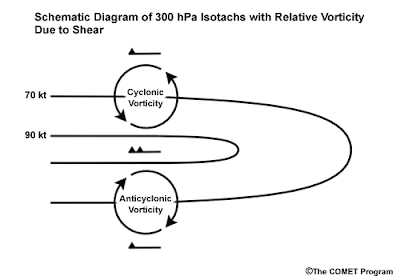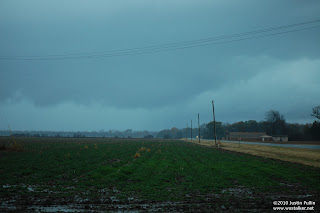Chases: 10 (4/4, 4/15*, 4/27, 5/19, 5/20, 5/21**, 5/22, 5/23, 5/24*, 5/25*)
Successful Chases: 9 (4/4, 4/15, 4/27, 5/19, 5/21, 5/22, 5/23, 5/24, 5/25)
Busts: 1 (5/20)
Storms Intercepted: 13
Tornadoes: 7 [Strongest: EF4 (5/24)]
Largest Hail Intercepted: ~1.75in [(Golfball sized) (Does not include HailSTONE collection)]
Strongest Winds Encountered: ~60 mph
States Chased In: LA, AR, MS, OK, KS, AL
Miles Driven: 6,089
*denotes days where tornadoes were observed
**denotes multiple tornadoes observed
Successful Chases: 9 (4/4, 4/15, 4/27, 5/19, 5/21, 5/22, 5/23, 5/24, 5/25)
Busts: 1 (5/20)
Storms Intercepted: 13
Tornadoes: 7 [Strongest: EF4 (5/24)]
Largest Hail Intercepted: ~1.75in [(Golfball sized) (Does not include HailSTONE collection)]
Strongest Winds Encountered: ~60 mph
States Chased In: LA, AR, MS, OK, KS, AL
Miles Driven: 6,089
*denotes days where tornadoes were observed
**denotes multiple tornadoes observed
Recap:
4/4: Targeted Northwest Mississippi with Cooper in hopes of intercepting semi-discrete cells out ahead of the ongoing MCS, as well as bowing segments within the MCS. We succeeded in intercepting several semi-discrete cells that managed to produce sporadic quarter sized hail. Unfortunately, the section of the MCS that we traversed gusted out before reaching our location north of Tupelo, MS, therefore no severe winds were experienced on a historic day for wind damage reports.
4/15: Forecasted semi-discrete cells to form south of an ongoing MCS due to outflow boundary interactions in Central LA early on this day. This forecast verified, however class didn’t allow me to depart MLU until well after 10:00am. At this point, the initial discrete cell matured into a supercell and produced an EF3 tornado in Jackson, MS. I managed to salvage the chase by chasing all the way into far Eastern MS and extreme Western AL intercepting 3 different storms (1 originating from an outflow boundary, the other 2 from a “dry boundry”) bagging two wall clouds and a semi-rainwrapped cone tornado near Quitmann, MS.
4/27: Did not intend on chasing on this day, however ended up in the middle of the Apocalypse on the way home from Dauphin Island, AL. Cooper, Torres, Voight, Willis, Keys and I intercepted a strengthening storm near Crystal Springs, MS as it crossed I-55. This particular storm featured two “hooks” at the time of intercepting. We barely missed the first hook but managed to document and call in a rotating wall cloud associate with the second hook. The gradient behind the dry boundary in eastern LA was among the strongest that I’ve ever personally experienced - extremely strong gusty winds made driving a challenge.
5/19: Day one of Project HailSTONE was met with a marathon drive from MLU to Wellington, KS beginning at 2am. Operations commenced upon arrival in Wellington with a brief training before jumping right into the action. The team intercepted several storms the weakened rapidly before intercepting a storm that produced decent results near Jetmore, KS that evening. The day officially ended in Woodward, OK 24 hours after initially departing from MLU.
5/20: Day two of Project HailSTONE turned out to be a bust. However, this provided valuable time to have a proper training session as well as bonding time with members. Following training and practice, activities for the day included a heated game of rock curling, touring a wind farm, and climbing a mesa to watch a storm ~80 miles to our north at sunset.
5/21: Day three of Project HailSTONE was an epic day on many levels. The team intercepted two supercells that featured incredible structure and produced ~5 tornadoes total (4 were documented by Cooper and I before going into collection mode). To top this off, a successful data set was collected by the team.
5/22: Day four of Project HailSTONE was arguably the most difficult day mission-wise due to the HP nature of the storms. The strength as well as the destruction produced by the Joplin, MO storm made collection and communication extremely difficult on this day.
5/23: Day five of Project HailSTONE was by far the most successful day of the project. The team identified an Oklahoma record sized stone that was 6 inches in diameter.
5/24: The final day of Project HailSTONE was short lived due to the excessive forward speed of the storms as well as the high number of tornadoes. Operations were called off and the team chased the tornado outbreak in central OK. After nearly getting stuck on dirt and clay roads, Cooper and I rebounded and managed to punch into the hook of a tornado producing supercell near Chickasha, OK. We were able to follow and document the EF-4 for the duration of its lifetime.
5/25: Before ending our spring season, Cooper, Kelley and I chased the high risk in northeast Arkansas. We witnessed a brief tornado on our storm north of I-40 before chasing its persistent wallcloud into the flooded plains of northeastern Arkansas. Cut off by the historic Mississippi River flood, we trekked back toward I-40 in hopes of getting on the next storm. However, a very crowded I-40 prevented us from achieving this as the storm raced ahead of us into Tennessee producing a tornado around Memphis in its wake.



















